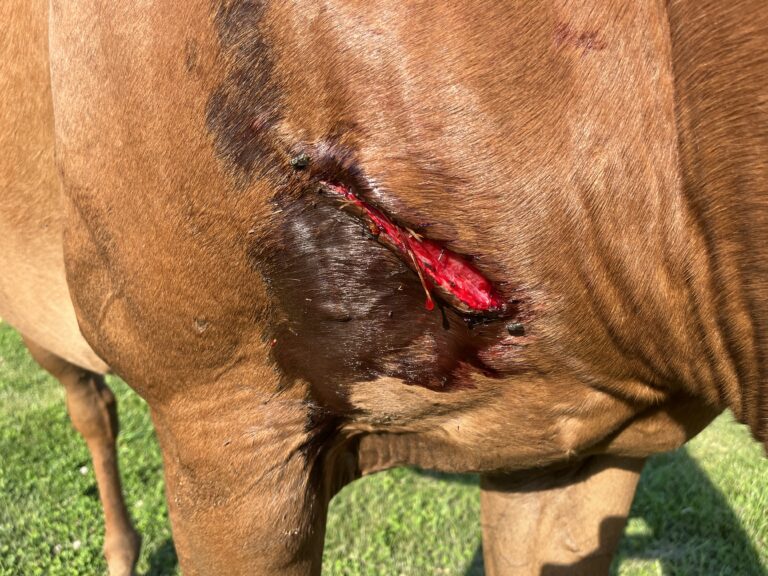In most warmblood breed registries, after passing an initial in-hand inspection, a stallion is required to prove his performance potential before being approved for breeding. The method using results from actual competition requires waiting until the horse is mature and competing at upper levels. While possibly a viable alternative if competition is the primary goal of the stallion owner, this approach takes at least decade out of the breeding life of a stallion.
Evaluating how a stallion’s offspring fair in competition takes even longer. A stallion could be quite old before it is discovered that he is an excellent producer. By this time he may have few years left at stud, limiting his contribution to the breed.
The 100-day stallion test was developed as a more efficient alternative, obtaining information on a stallion’s performance potential early in his career, when he can still have a significant impact on the breeding program.
In the stallion performance test the horses are placed in training under the same director at the same facility for 100-days. During the training period each of the stallions are given marks in nine different categories (See the table below) which include not only basic gaits and jumping ability, but also character, temperament, willingness to work and rideability. The training director’s scores make up 50percent of the stallions’ overall score.
To prevent the training director’s opinion from carrying too much weight, the second half of the stallions’ score is determined by outside experts during the final days of the testing. The stallions are free jumped and their basic gaits are judged. During the jumping phase of the final test, two experienced riders ride each of the stallions over a course and score the horse’s ability and willingness. In the rideability phase three experts ride each stallion for 5 minutes and score the horses on how easy, willing and responsive they are to ride.
The stallions are also judged on their canter and jumping ability while completing a cross country course of 10 obstacles. At the end of the cross country the stallions complete a gallop of 1000 meters, after which they are checked by a veterinarian for their recovery and any circulatory or cardiac defects.
It is of interest to note that rideability counts for 30 percent of the total score, whereas jumping and basic gaits are only 30 percent and 20 percent. The scores for Rideability, Character, Temperament and Willingness to work evaluate the inner, mental character of the stallion and count for more than 45percent of the total score – almost half. The stallion performance test clearly has an heavy emphasis on the attitude and mind set of a stallion, which is something that can only be measured by working with the horse.
The 2002 100-day test was organized by the Federation of North American Sport Horse Registries and was held at Paxton Farms in Ohio. The Training director was Helmut Schrant, a stallion manager who has been active in stallion testing since 1990. The final testing was held Nov 7-10, 2002 and the expert judges were Manfred Lopp, former training director of the stallion testing center at Adelheidsdorf, Cord Wassmann, president of the German Hannoverian stallion licensing commission, and Dieter Felgendreher, a Kentucky trainer and the training director for the 1994 stallion test at the Kentucky Horse Park.
The guest riders for the under saddle jumping were Wisconsin’s Donald Cheska and California’s Ray Texel . The guest riders for the rideability were Scott Hassler from Maryland, Maryland, plus Ingo Pape and Marion Ostmeyer from Germany
Scoring breakdown
Results of the 2002 Stallion Testing
100-Day Test
* Age handicap (5 points) for stallions of 5 years and older
This article first appeared in May, 2003 issue of Dressage Today magazine.











